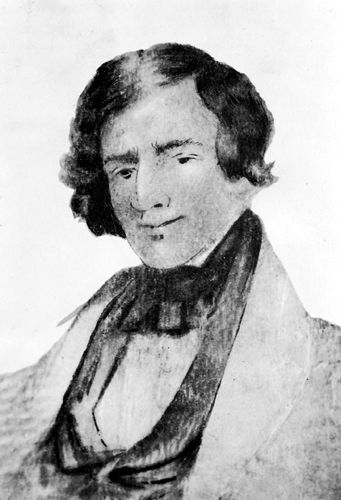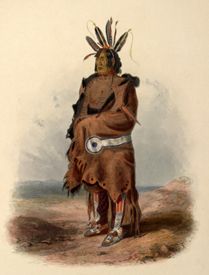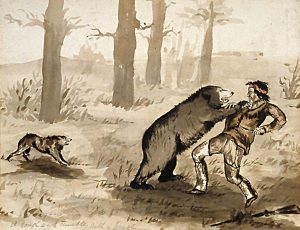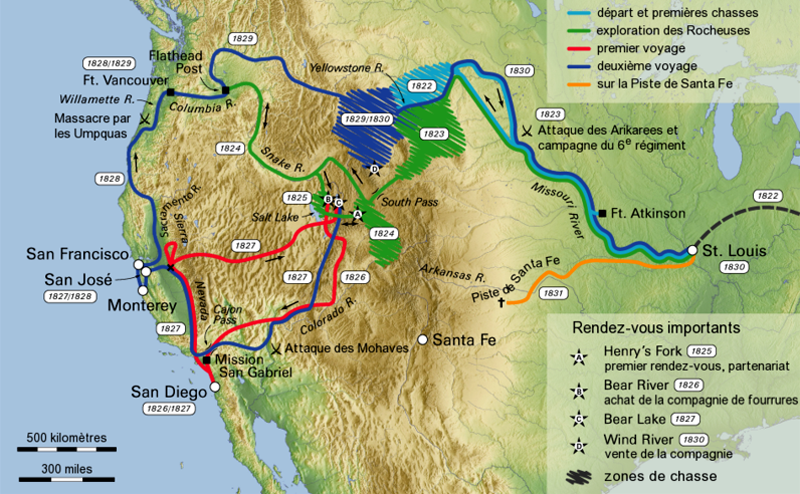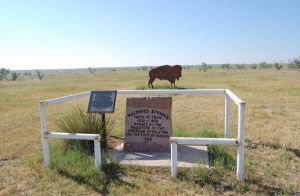“I wanted to be the first to view a country on which the eyes of a white man had never gazed and to follow the course of rivers that run through a new land.” ~ Jedediah Smith
Jedediah Strong Smith was a mountain man, explorer, and trailblazer who explored the Rocky Mountains, the American West, and the Southwest during the early 19th century.
Smith was born on January 6, 1799, in Bainbridge, New York but was raised in Pennsylvania and Ohio. After receiving some education and a strong religious upbringing, he made his way to St. Louis, Missouri, in 1822, determined to become a trapper. He soon joined up with William Henry Ashley, traveling up the Missouri River to the mouth of the Yellowstone River. There, he remained with Andrew Henry until the following Spring. He then was sent with a message to Ashley, who had wintered downriver. Ashley, Smith, and the other fur trappers soon encountered hostilities with the Arikara Indians. In the battle that ensued on June 1, 1823, Smith was said to have distinguished himself for bravery.
Smith then led about a dozen men across the plains south of the Yellowstone River to open new trapping grounds. However, before they reached the Powder River, Smith was mauled by a grizzly bear. Though he survived, he was scarred for life and afterward wore his hair long to hide the scars.
With some guidance from Crow Indians, in the spring of 1824, they traveled through South Pass, Wyoming. This route significantly shortened the time needed to get to the west slope of the Rocky Mountains and would later become the path used by emigrants on the Oregon Trail.
With Ashley, the party brought nearly 9,000 pounds of beaver pelts to St. Louis in 1925, and Smith became a partner in the Rocky Mountain Fur Company. In 1826, Smith, David E. Jackson, and William and Milton Sublette bought the business from William Ashley.
In August 1826, Smith led a group of trappers on his first trip to California, which landed him in trouble with the Mexican authorities. The group followed the Colorado River in search of new hunting grounds and was attacked by Mohave Indians, losing several men. Later, they were led by two Tongva Indians to the San Gabriel Mission, avoiding Death Valley and eventually reaching the mission west of present-day Los Angeles, California. Smith and some of his men were soon arrested by Mexican authorities but were later released on the promise that they would leave the territory and never return. Despite their promise to leave, the party made their way to the San Joaquín Valley, which they explored.
Leaving the majority of the men in California, Smith and two other men left California in the spring of 1827, crossing the Sierra Nevada Range into Utah. One of the men died in the crossing, but Smith and the other man eventually made it to their company rendezvous at Bear Lake, Utah.
Despite the Mexicans’ warnings, Smith returned to California in July 1827 with 18 men and two women, again following the Colorado River. They were attacked at the river crossing by Mohave Indians, who killed ten men and took the two women. Smith and the other survivors made their way to the San Gabriel Mission before moving northward to meet with the group they had left in the San Joaquin Valley. Before long, Smith and his men were again arrested but amazingly were released, despite his earlier breach of trust. Though Smith promised to leave California, he and his men hunted in the Sacramento Valley for several months before departing.
For the next several years, Smith concentrated on building the fur company and never returned to California, instead focusing on Oregon country. In 1828, a group of Klawatset Indians attacked him and his men. Fifteen of Smith’s 19 men were killed. Smith and three others escaped and made their way to Fort Vancouver, Washington.
In the spring of 1829, Smith returned to the upper Rocky Mountains, promising to confine his operations to the region east of the Great Divide.
For the next year, he trapped the Blackfeet country with Jim Bridger, but in 1830, he and his partners sold the Rocky Mountain Fur Company. Smith returned to St. Louis for a time, but by early 1831, he and his partners, David Edward Jackson and William L. Sublette got involved in the Santa Fe fur trade. They left St. Louis in April with 74 men and 22 wagons.
In May 1831, Smith and another man rode away from the caravan searching for water. Smith never returned. The rest of the party continued without him, hoping that he would catch up somewhere along the way. When they arrived in Santa Fe, they met up with a Mexican merchant selling some of Smith’s belongings. When questioned, the merchant reported that Smith had been attacked by a group of 15-20 Comanche Indians near Wagon Bed Spring on the Cimarron River, south of present-day Ulysses, Kansas, on May 27. Smith’s body was never found.
Jedediah Smith’s explorations were significant in opening the American West and included several “firsts,” such as being the first white man to cross what would become the states of Utah and Nevada, the first to enter California by the overland route, the first to scale the High Sierras, and the first explorer to reach Oregon overland by traveling up the California coast.
© Kathy Alexander/Legends of America, updated November 2022.
Also See:
List of Old West Explorers, Trappers, Traders & Mountain Men
Trading Posts and Their Stories
Trappers, Traders & Pathfinders

